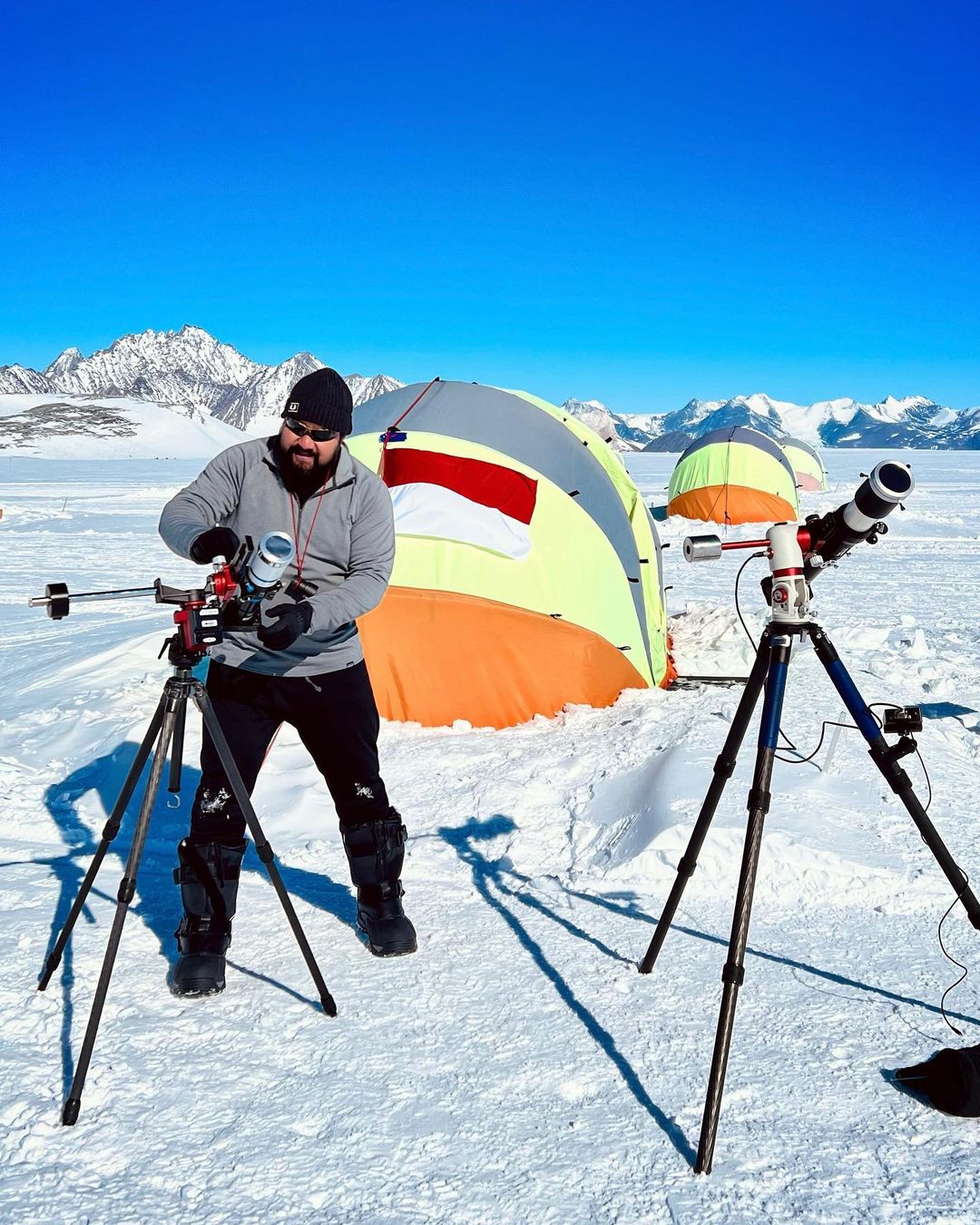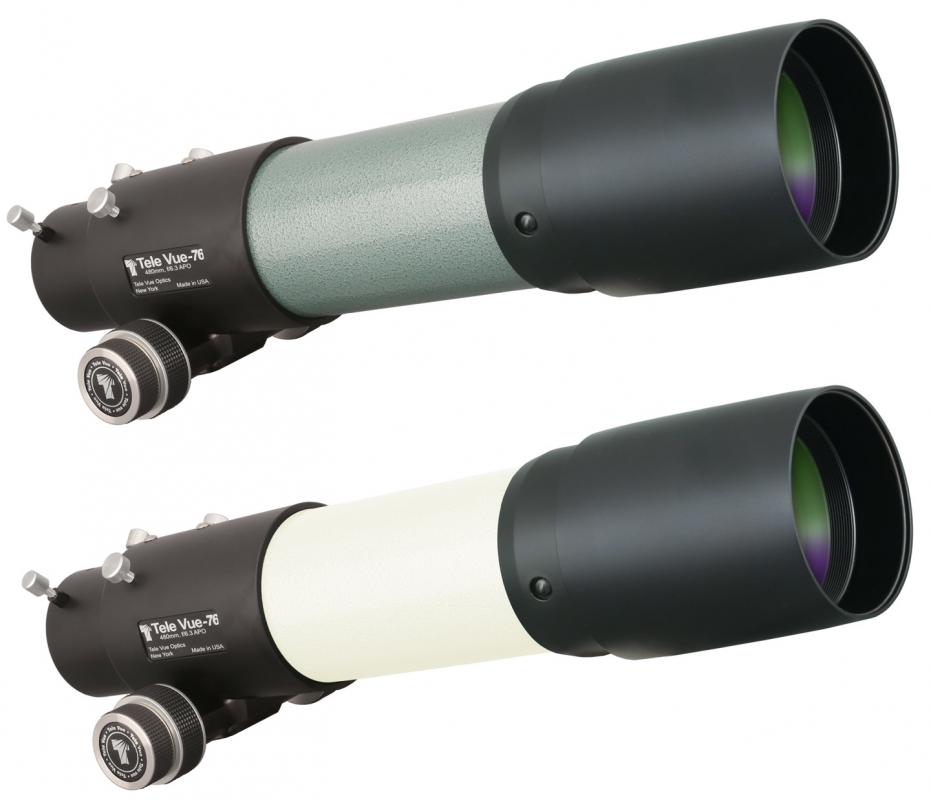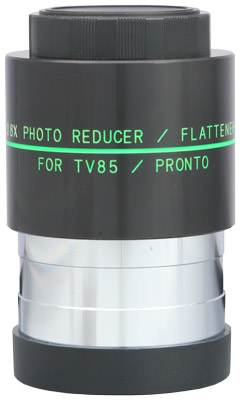Your 2021 Year-End Eclipse Images!

What a way to end the year! We had the 19 November 2021 (almost total) Lunar Eclipse followed two weeks later by the 4 December 2021 Total Solar Eclipse. While the first event was at an odd hour and the second an odd location, Tele Vue scopes did capture both events. This blog is a gallery of your eclipse photos!
November Lunar Eclipse Images

Our very own Mahendra Mahadeo, located in the Hudson Valley of New York, had clear skies that night after a late-evening rain. He describes his photo in his own words.
This morning between 2:30 am and 5:30 am EST, the moon passed through the dark central region of the Earth’s shadow, called the Umbra, revealing the interesting colors of that shadow. As seen in this photo, the center of the Earth’s shadow is actually red and this is caused by the refraction of sunlight passing through the Earth’s atmosphere; red goes toward the center shadow and the other colors go further away from the center. This was a partial lunar eclipse because only 97% of the Moon’s surface was covered by the Umbra, which was enough to make it appear bloody red in the morning sky.

In the northwestern suburbs of Philadelphia, Stanley Williams connected his iPhone to a Tele Vue 13mm Ethos eyepiece using our FoneMate smartphone adapter. With the iPhone set to 2x zoom, the shutter was triggered via Apple Watch camera app.
Tele Vue-NP101is From the Canadian Rockies

Matthew Wheeler didn’t let thin clouds interfere with imaging – he used them to his advantage.
With a thick deck of clouds moving in at moonrise, I almost gave up on this eclipse. It thinned near mid-eclipse, so I hastily mounted the Tele Vue-NP101is on the Tele Vue Systems equatorial mount, plugged in the AA batteries, attached a camera, and was ready to go. The photo shown here was only the 15th of the night including focusing and exposure tests, but it is my favourite.
Without the cloud, of course, it was impossible to properly expose Earth’s shadow and the sunlit edge all in one photo, but a cloud lined up nicely to make this my favourite image of the whole night, requiring no local dodging and burning. No colour enhancement was used either. I also like the soft Mars-like appearance given to it by the cloud layer and poor seeing.
It is fun to think that, 2.7-seconds before being refracted by the 4-lenses of the NP101is, the red umbral sunlight was being bent and filtered through Earth’s zones of sunrise and sunset. Bathed in eerie red light, someone standing on the moon in the umbra would see a spectacular ring in the black sky. Perhaps a future eclipse-chasing destination?
Matthew told us what he likes about the Tele Vue-NP101is.
I like the portability of the Tele Vue-NP101is — being able to toboggan it or run it across a field — as in this case, as well as the well-fitting but lightweight threaded parts, and the ease of rotating the camera for composition with no focus shift.
Oddly enough, thanks to this telescope, this event was the most fun eclipse since I stayed up all night at 0˚F photographing the spectacular dark December 1982 total eclipse, using a Pentax K1000 camera attached to my Tasco 60mm refractor with tubes I made out of plastic drain plumbing. It always annoyed me that I got nothing of publishable quality after all that work, and it has been worth waiting for the right instrument!
The Tele Vue-NP101is pairs extremely well with the astrophotography-friendly Pentax K-1 full-frame camera. I use it mainly for astronomical landscapes, normally with the large field corrector, adapted this time, not with plumbing but a custom brass collar machined by my brother, John Wheeler.

Dan Ward in northern Virginia used our 0.8x Reducer/Flattener to convert his Tele Vue-85 from f/6.3 to f/5.6. This faster speed gives the imager the flexibility of using a shorter exposure time or lower ISO which can be important at totality.
December Solar Eclipse Images
Tele Vue-76 Union Glacier, Antarctica
Wijaya Sukwanto from Indonesia flew to Chile for the November Lunar Eclipse and then continued to Antarctica for the December Solar Eclipse. His image of Solar Baily’s Beads is at the top of this blog post.

He tells us in his own words about his trip to the “bottom of the world.”
On 29th of November, my flight touched down on Union Glacier’s blue-ice runway. It was bumpy and the plane slipped a bit. The weather was very cold with wind-chill dropping to -20°C (-4°F). We stayed at Union Glacier camp, in a two-person tent. The first day I ran some tests on my telescope and photography system. All went well.
Landing on Blue Ice
This is how Wijaya arrived at the Union Glacier camp to observe the Eclipse.
 Boeing 757-200 ER on the blue-ice runway at Union Glacier, Antarctica. (Credit: Antarctic Logistics & Expeditions press release photo.)
Boeing 757-200 ER on the blue-ice runway at Union Glacier, Antarctica. (Credit: Antarctic Logistics & Expeditions press release photo.)
The above image may seem incongruous. The natural environment of one of our most modern forms of transportation is tarmac and terminals surrounded by fuel trucks, baggage loaders, and other mechanical artifacts of humanity. A remote windswept glacier in the mountains of Antarctica isn’t the usual habitat of a Boeing 757 passenger jet — until recently.
The first landing of a Boeing 757 commercial jet at Union Glacier was a few years back. It was a joint partnership between Antarctic Logistics & Expeditions (ALE), Loftleidir Icelandic, and NAS Corporation Limited (NAS) that proved the feasibility of these flights in order to have more options for their customers that include tourists and scientists.
The special “blue-ice” runway at Union Glacier is a result of the local topography. As explained on the ALE website, when wind-blown snow encounters mountain ranges in the Antarctic interior, the snow load is deposited on the windward side. Snow-free wind blows down the other side of the mountain and clears the glacier of snow accumulation. This allows jets to use their regular wheeled landing gear — though pilots stay off the brakes and rely on the reverse engine thrust to stop. This means it takes longer to stop, but the 3-km (1.86-miles) long runway can accommodate this.
Wijaya told us his Icelandic Airlines Boeing 757 only stayed on the ground for an hour before returning to Chile.

Wijaya tells us in his own words about the eclipse experience “on the ice.”
On the day of the eclipse, I had all the equipment set up and ready on-field 5-hours before the eclipse. It was very cold that day, around -30°C (-22°F). I use the Tele Vue-76, Powermate 2x, and Sol Searcher with Canon 5D Mk4 as my main system. I have used this configuration for my last eclipse with very successful results.

In the final minute, after 4-hours exposed to extreme cold, I do a final adjustment of the focuser. The scope focuser performs very well in extreme cold temperatures. Smooth as usual.

Again, Tele Vue products have proven their reliability. From hot to cold. Kudos! I’m looking forward to setting up a secondary system with another Tele Vue telescope for the next eclipse.
Did you observe, sketch, or image with Tele Vue gear? We’ll like your social media post on that if you tag it #televue and the gear used. Example:
televue #tv85 #ethos #jupiter
Do you want your Tele Vue images re-posted on Tele Vue Optics’ Social Media accounts? Use this hashtag for consideration:
#RPTVO






